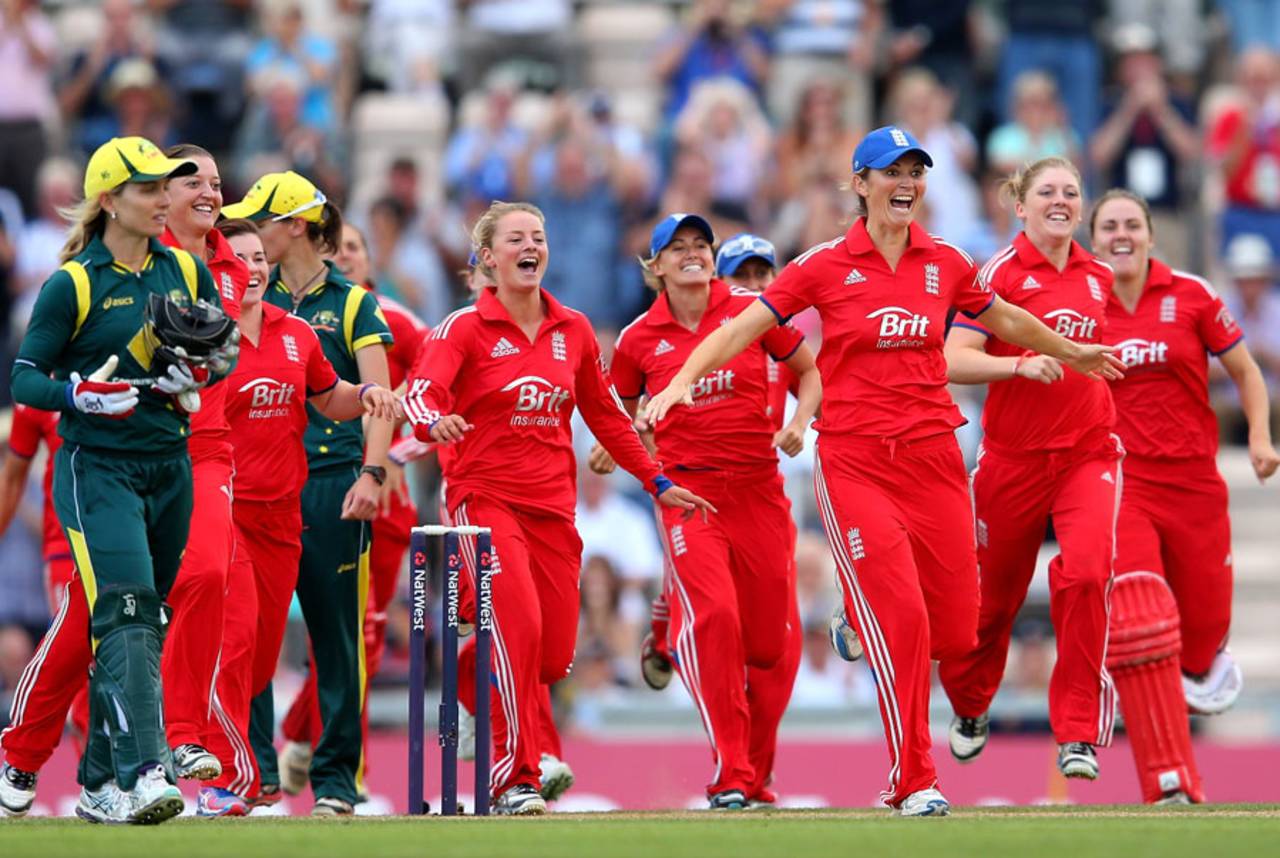Cricket fans are a sceptical bunch. We don't like change. Be it overarm bowling back in the the 19th century, the introduction of the helmet in the 1970s, or the onset of T20 cricket, innovations turn us all into Geoffrey Boycotts, grumbling about this being the end of cricket as we know it. We always know better than the innovators.
We are almost always proved wrong.
The outcry from many purists, myself included, when the
new women's Ashes format was announced back in May was therefore not a surprise. Test cricket is the pinnacle. Tests are the way things should be decided. The idea of T20 and ODI cricket "mattering", and even deciding a contest as ancient as the Ashes, was anathema, horrific.
Once again, we were wrong.
It is easy to ignore that innovations are generally conceived as the solution to a problem, rather than just to irritate cricket's diehard fans (though often they do both). Why the new women's Ashes format? It was the brainchild of
Clare Connor, the ECB's head of women's cricket. A crucial part of her job is to fight for media attention, which women's cricket still struggles to secure: "We believe that this new multi-format series will gain significantly more profile and context than can be generated by playing a one-off Test match every couple of years," Connor stated in the ECB's press release.
Here is the problem: women's Test cricket is dying a slow death. Forget
Death of a Gentleman. Gentlewomen are already nearly dead, and no one, it sometimes seems, is doing anything to stop it. Connor knows better than anyone that women's Test cricket is in danger of disappearing. She played her first Test match back in 1995, during a three-Test series against India. She retired in 2005, the same year the ICC took over the running of the women's game: since then, England and Australia have become the only countries still playing women's Test cricket, and the idea of a three-Test series has faded to a distant dream.
This new format was designed, ultimately, to keep public interest high in a series that would otherwise have been decided by one drawn Test match - just as the women's Ashes was decided in 2009. Its success - sorry, purists - should not be measured by the extent to which the series conformed to old-style ideas about what "cricket should be", but by whether the series captivated public attention, right up to its conclusion.
Just in case you hadn't noticed - it did.
I was present at most of the matches this summer, and there were many highlights: Walking into the press tent at Wormsley on day one and seeing it rammed full of journalists; the crowd of over 3000 at Wormsley on the first day, who sensed the excitement of the players as they ran out to warm up for their first Test in over two years; Sky deciding to send cameras to the third ODI
in Hove because they knew people wanted to watch the action; the glorious summer evening
in Chelmsford when 5000 fans turned up to the first T20, and created an atmosphere more electric than any men's T20 match I have ever been to; seeing my Twitter feed fill up all summer with tweets about the #womensAshes.
And of course, watching England race on to the pitch
in Southampton when Lydia Greenway hit the winning runs, and seeing the delight on their faces.
As a purist, I should be appalled: this Ashes series was ultimately decided by the team that proved stronger at the 50-over and T20 forms of the game. But then I think about that day in Southampton, a T20 double-header, and I wonder: how much did anyone care about the men's game that followed England women's Ashes victory? Which match had more invested in it? Which one was the top sports story on the BBC 10 o'clock news that evening? And which one made the front page of the Times the next day?
Without the multi-format structure, would the answer to those questions have been different? Yes, it would.
Here was my fear when the new format was announced: surely this signals just another stage in the slow decline of women's Test cricket? I think the jury is still out on that one. Personally I would love to see the format adjusted to incorporate two Tests between the sides, and it seems to me that the interest surrounding the Wormsley game absolutely justifies making that happen. What we do know is that the next Ashes series - England return to Australia in January - will be played using the
same format. In the short term, then, this new format at the very least entrenches women's Test cricket between England and Australia.
But I think that there is also a case that other national cricket boards may, in the wake of the huge interest surrounding this series, now see a multi-format series that incorporates Test cricket as a commercially attractive proposition. I hope so. It would mean that other countries that have a rich tradition of Test cricket - New Zealand, India, South Africa - might get to participate in Tests again, which many of the fans, and certainly all the players (to them, Tests are still the pinnacle), would embrace with open arms. To all the purists: far from killing off Test cricket, this new format might well help to revive it.
For now, though, I am so, so excited by the present. Because as someone who has followed the women's game for quite a few years now, I can safely say two things: one, this summer was special for the women's game. And two, Clare Connor is a genius.
